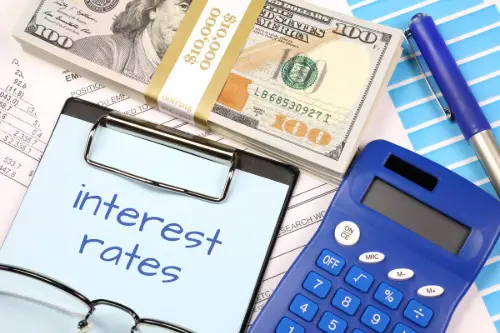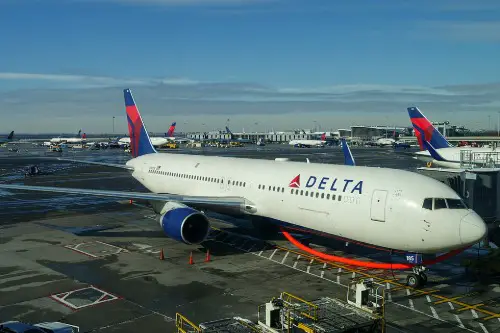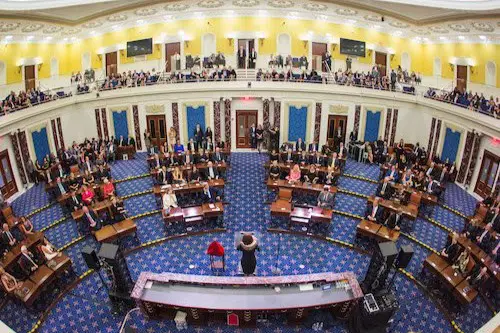1. Corporate Tax Cuts

The 2017 Tax Cuts and Jobs Act was pitched as a way to stimulate growth and reduce inflation by boosting business investment. Lower corporate tax rates were supposed to trickle down to workers through wage increases and job creation. But instead, many companies used the windfall for stock buybacks and executive bonuses. The promised productivity boom never materialized.
Meanwhile, inflation kept climbing, and wage growth lagged behind rising prices. The cuts widened wealth gaps and padded shareholder portfolios. For everyday Americans, the benefits were minimal. And yes, yacht sales quietly surged.
2. Interest Rate Hikes

The Federal Reserve raised interest rates aggressively to cool inflation by slowing borrowing and spending. The idea was to reduce demand and stabilize prices without triggering a recession. But higher rates made mortgages, car loans, and credit card debt more expensive for average consumers. Wealthier Americans simply shifted assets and rode out the storm.
Luxury markets remained strong, while first-time homebuyers were priced out. The pain was unevenly distributed, hitting low- and middle-income households hardest. Inflation dipped—but so did affordability. And yes, the rich kept refinancing their vacation homes.
3. Pandemic Stimulus for Corporations

Emergency relief packages included billions in corporate aid, intended to stabilize the economy and preserve jobs. Airlines, hotels, and large retailers received generous bailouts with few strings attached. While some jobs were saved, many companies still laid off workers or closed stores. Executive compensation, however, remained untouched.
The stimulus helped stock prices rebound faster than wages. Small businesses struggled while big brands thrived. The recovery was lopsided—and inflation kept rising. And yes, private jets got upgrades.
4. Deregulation of Energy Markets

Loosening environmental and drilling regulations was framed as a way to lower energy costs and fight inflation. The theory was that increased domestic production would reduce reliance on volatile global markets. But oil companies prioritized profits over price relief, funneling gains into dividends and exploration abroad. Gas prices remained unpredictable.
Consumers saw little benefit at the pump, while energy executives saw record earnings. The deregulation didn’t tame inflation—it just boosted margins. And yes, offshore yachts got bigger engines.
5. Tariff Rollbacks

Reducing tariffs was supposed to lower import costs and ease inflationary pressure on goods. The logic was sound—cheaper inputs mean cheaper products. But many companies kept prices high, citing “supply chain recovery” while pocketing the savings. The consumer saw no discount.
Meanwhile, luxury imports surged, and trade deficits widened. The rollback helped corporate profits more than household budgets. Inflation barely budged. And yes, imported champagne flowed freely.
6. Real Estate Investment Incentives

Tax breaks and zoning changes were designed to spur housing development and reduce costs. But instead of affordable units, developers built luxury condos and short-term rentals. Investors flooded the market, driving up prices and squeezing out local buyers. The housing crisis deepened.
Renters faced rising costs, while landlords expanded portfolios. The incentives didn’t fix inflation—they inflated asset bubbles. And yes, rooftop pools got fancier.
7. Stock Market Stabilization Policies

Federal interventions aimed to calm markets during economic turbulence, hoping to prevent panic and inflation spikes. But the biggest beneficiaries were institutional investors and hedge funds. Asset prices rebounded quickly, while wages and consumer goods lagged. The disconnect grew wider.
Retail investors got crumbs, while Wall Street feasted. Stabilization didn’t trickle down—it trickled sideways. And yes, yacht brokerage firms had banner years.
8. Supply Chain Subsidies

Government funding supported logistics upgrades and domestic manufacturing to ease shortages and reduce inflation. But many subsidies went to large corporations with global footprints. Instead of lowering prices, they expanded operations and passed costs to consumers. Bottlenecks persisted.
The funding helped balance sheets more than grocery bills. Inflation remained stubborn, and essentials stayed expensive. And yes, executive retreats got longer.
9. Inflation Reduction Act (IRA)

The IRA was marketed as a comprehensive fix—targeting healthcare, energy, and corporate taxes to tame inflation. While it made strides in climate investment and deficit reduction, its short-term impact on prices was limited. Many benefits were long-term, and inflation remained sticky. Critics argued it helped industries more than individuals.
Healthcare costs dipped slightly, but everyday expenses stayed high. The act was ambitious—but uneven in execution. And yes, yacht clubs didn’t complain.
This post 9 Things That Were Supposed to Fix Inflation—But Mostly Fixed Rich People’s Yachts was first published on American Charm.


